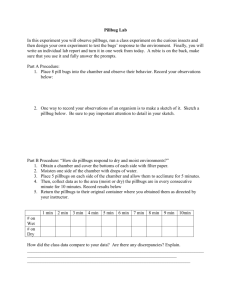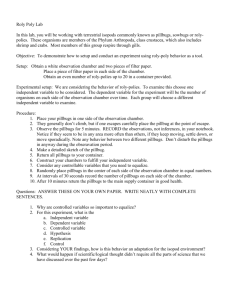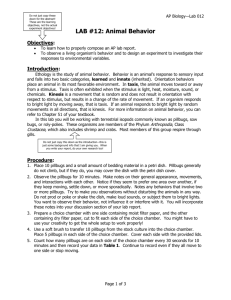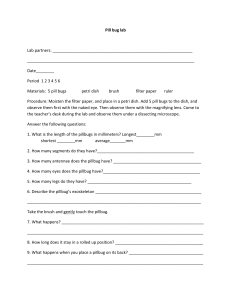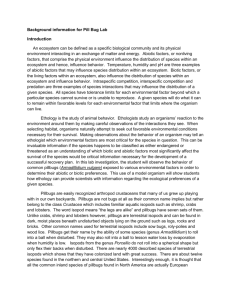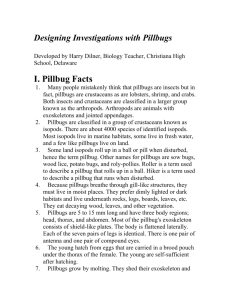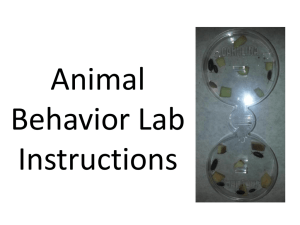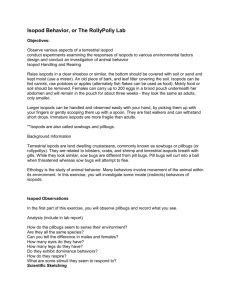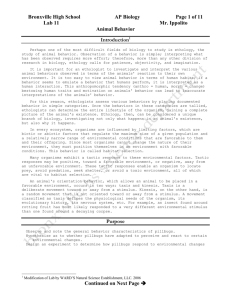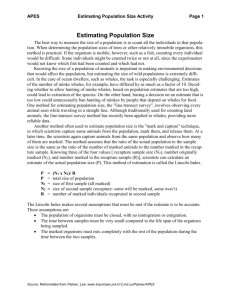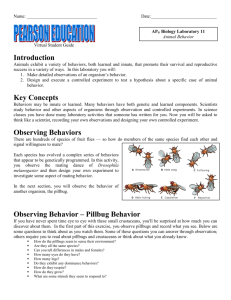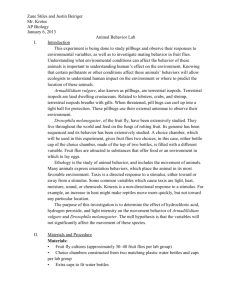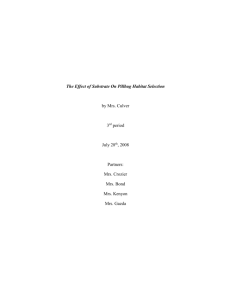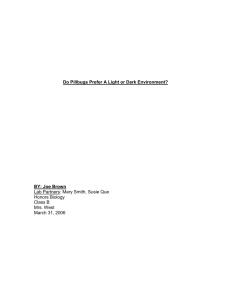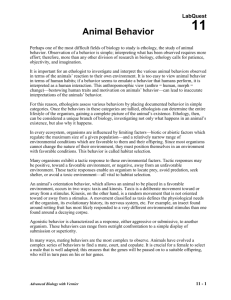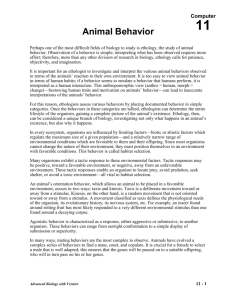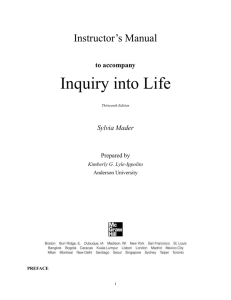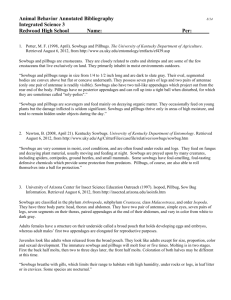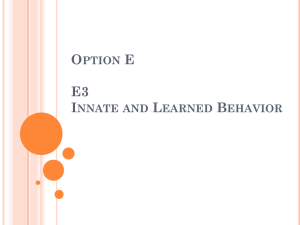Pillbug Experimental Design
advertisement
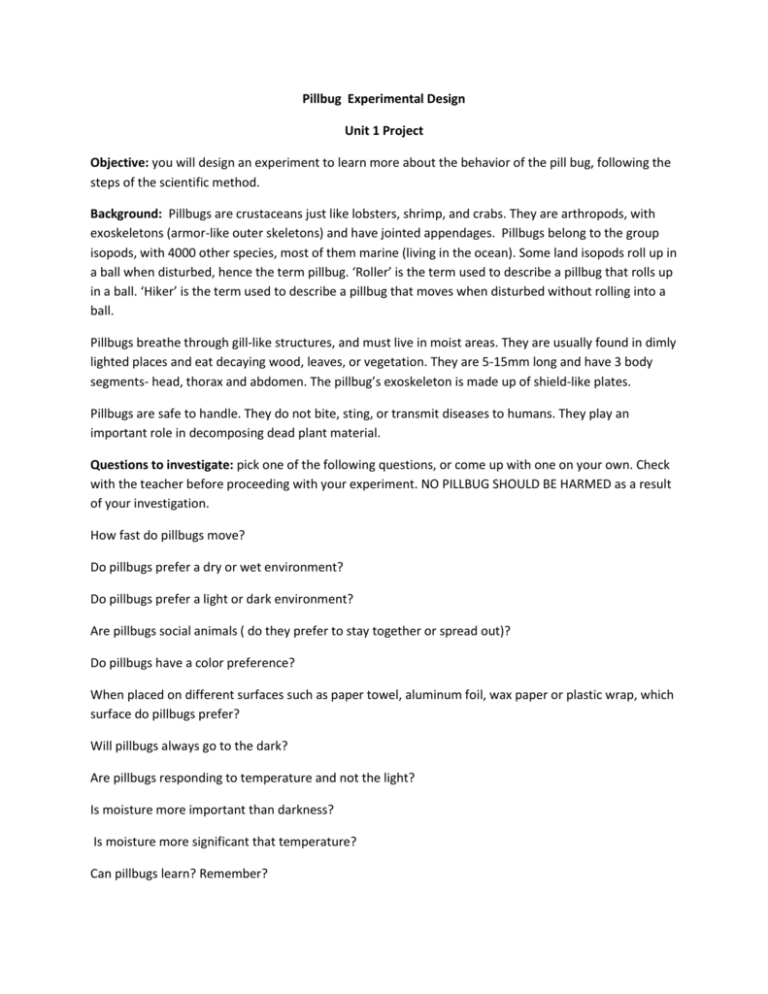
Pillbug Experimental Design Unit 1 Project Objective: you will design an experiment to learn more about the behavior of the pill bug, following the steps of the scientific method. Background: Pillbugs are crustaceans just like lobsters, shrimp, and crabs. They are arthropods, with exoskeletons (armor-like outer skeletons) and have jointed appendages. Pillbugs belong to the group isopods, with 4000 other species, most of them marine (living in the ocean). Some land isopods roll up in a ball when disturbed, hence the term pillbug. ‘Roller’ is the term used to describe a pillbug that rolls up in a ball. ‘Hiker’ is the term used to describe a pillbug that moves when disturbed without rolling into a ball. Pillbugs breathe through gill-like structures, and must live in moist areas. They are usually found in dimly lighted places and eat decaying wood, leaves, or vegetation. They are 5-15mm long and have 3 body segments- head, thorax and abdomen. The pillbug’s exoskeleton is made up of shield-like plates. Pillbugs are safe to handle. They do not bite, sting, or transmit diseases to humans. They play an important role in decomposing dead plant material. Questions to investigate: pick one of the following questions, or come up with one on your own. Check with the teacher before proceeding with your experiment. NO PILLBUG SHOULD BE HARMED as a result of your investigation. How fast do pillbugs move? Do pillbugs prefer a dry or wet environment? Do pillbugs prefer a light or dark environment? Are pillbugs social animals ( do they prefer to stay together or spread out)? Do pillbugs have a color preference? When placed on different surfaces such as paper towel, aluminum foil, wax paper or plastic wrap, which surface do pillbugs prefer? Will pillbugs always go to the dark? Are pillbugs responding to temperature and not the light? Is moisture more important than darkness? Is moisture more significant that temperature? Can pillbugs learn? Remember? Will pillbugs go to a food source? Stay near a food source? Remember where a food source is located? Can pillbugs see? Do pillbugs have leaders and follow each other? Can pillbugs communicate with each other? Steps to follow for Pillbug Project: 1. Select one question from the list and state it clearly 2. Write a hypothesis that relates to the question. Write the hypothesis in the form of an if….then question. Predict what you think will happen. EX: “If pillbugs are placed in a box with yellow and green paper on each end, then they will choose the yellow paper.” 3. Make a list of the variables that might influence the behavior of the pillbugs. Identify the Controlled variables (the things kept the same), the variable that will be manipulated (independent variable, and the variable to be measured ( dependent variable). 4. Design the experiment. Including materials and the steps of the procedure. Check with the teacher before running the experiment 5. Conduct the experiment. In science, experiments are often run many times. 6. Record your data and summarize your results using data tables, drawings, or graphs. 7. Conclude whether your hypothesis was supported (it happened the way you expected) or not supported ( you were not expecting the results you got). 8. Write up the experiment and results. 9. Hold a Pillbug Behavior Seminar. Pillbug Project: Unit 1 Name: Date: Period 1 2 3 4 5 6 Question to be investigated: Hypothesis to be tested: (put into an “if….then” statement) Materials needed to carry out the investigation: Procedure for the investigation Data collected Conclusion: summarize your findings, and state if your hypothesis was supported or not.
